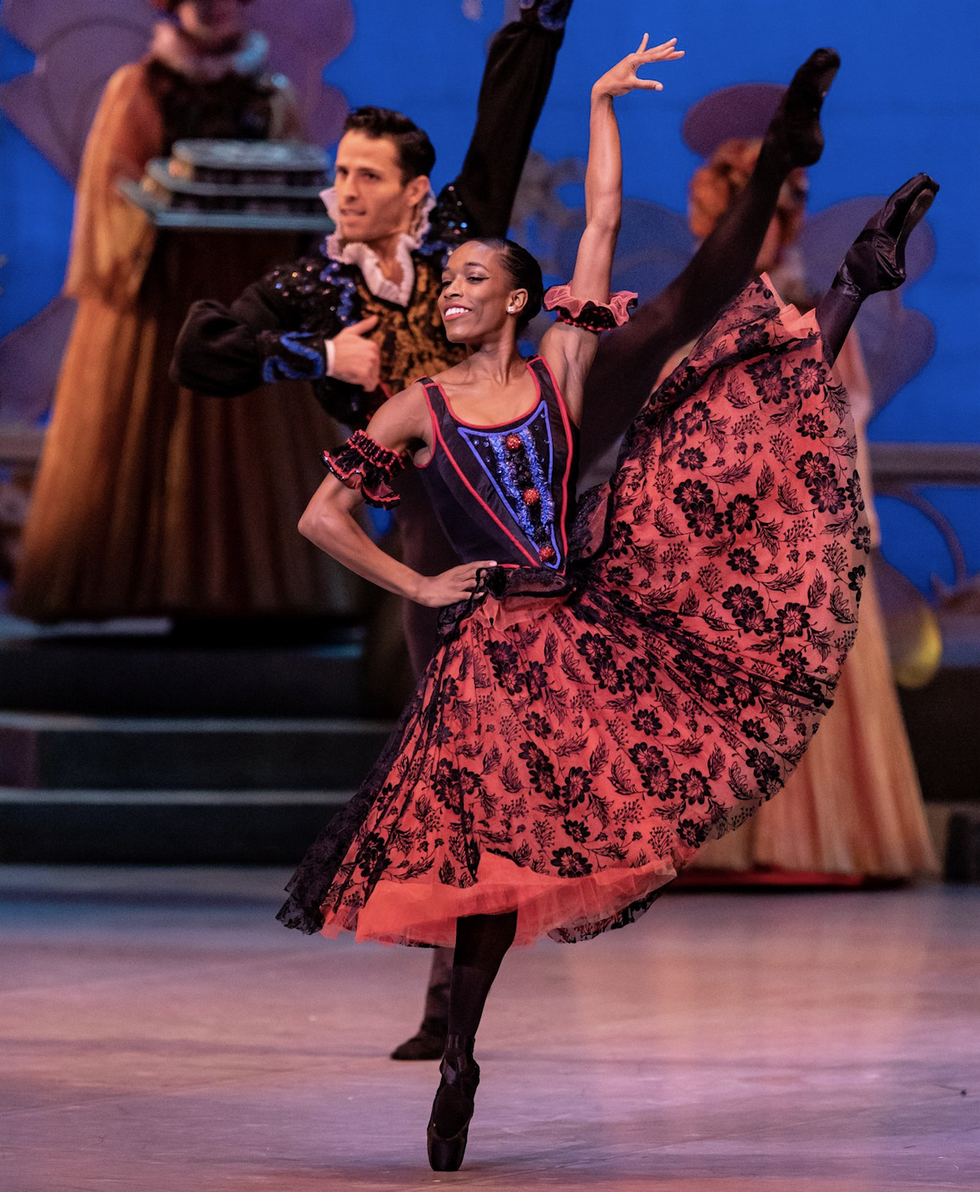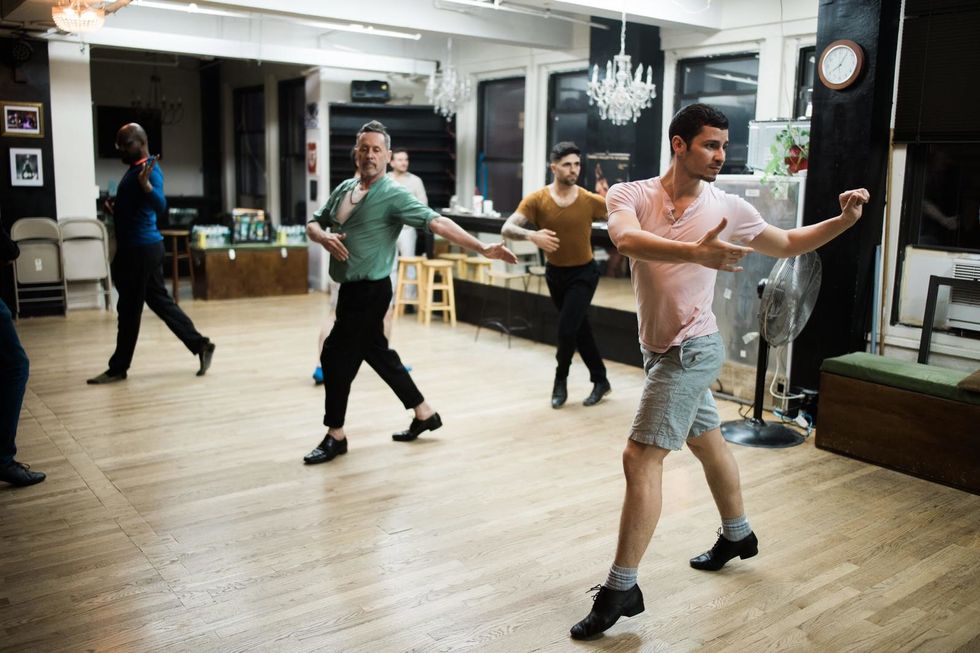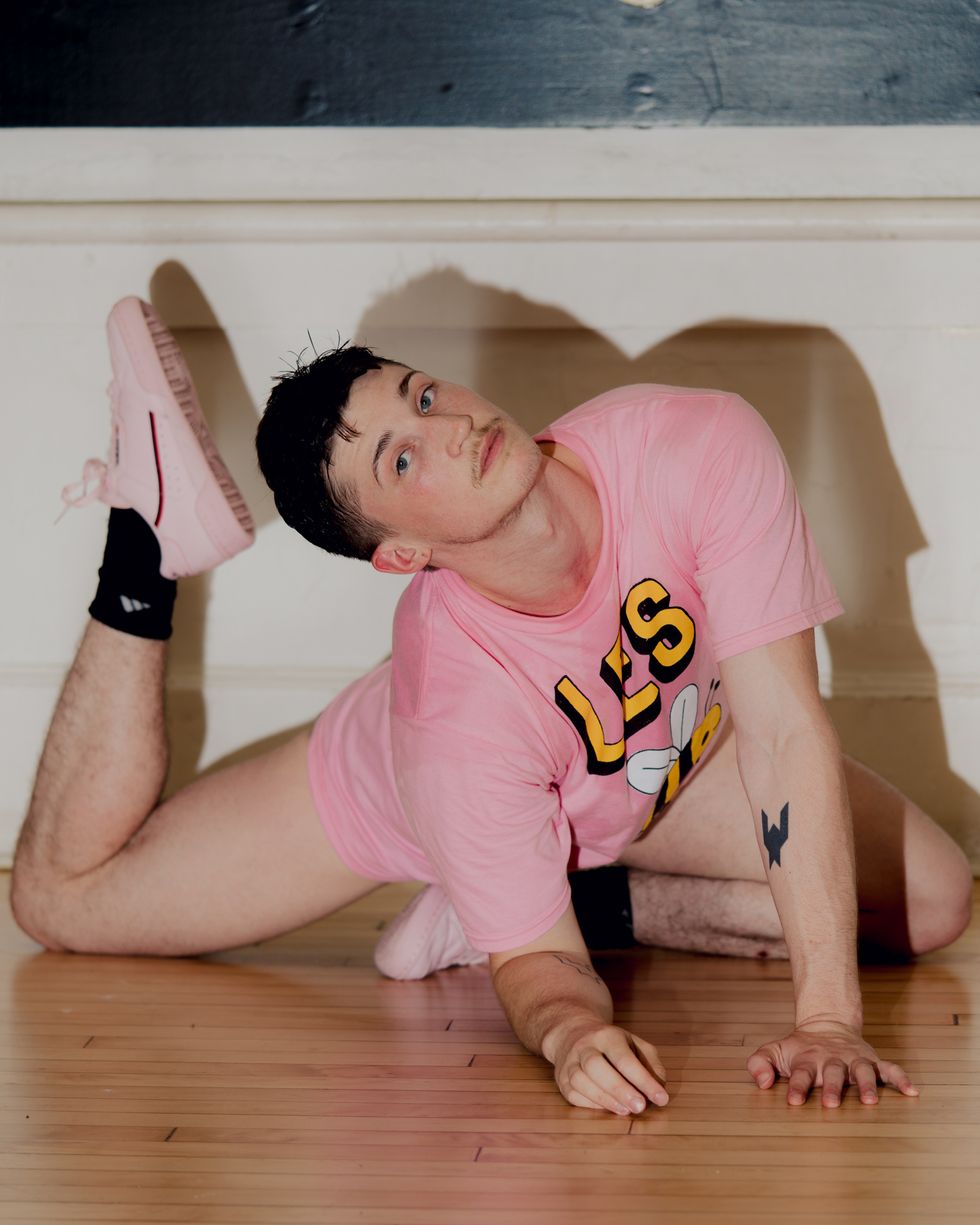Pride & Dance: Why Our Field Can Be Both a Haven and a Challenge for LGBTQ Artists

Antoine Saito, Courtesy Felder
Kiara Felder: “Could I be a ballet dancer and be lesbian?”
Kiara Felder
, 27, grew up in North Carolina, in a household she describes as “not too crazy,” but conservative Christian. Her family is now supportive, but at the time, they didn’t talk about LGBTQ people.
“The understanding was that being gay was wrong,” Felder says.
She trained at University of North Carolina School of the Arts, where she had male friends who were gay, but didn’t know any ballerinas who identified as lesbian or queer—there or anywhere else. She wasn’t sure if queer women were welcome.
“Without representation, I started to feel this pressure and fear,” she says. “Could I be a ballet dancer and be lesbian?”
She stayed in the closet through her training at UNCSA and later at Pacific Northwest Ballet School’s Professional Division. She worried that she’d lose her scholarship at PNB if the administration found out she was gay. Like many young queer people, she internalized homophobic ideas.
“I thought, ‘They’re going to think I’m a deviant, they won’t let me perform,’ ” she says. “It seems extreme when I look back on it now, but I was afraid.”
It wasn’t until she landed a job with Atlanta Ballet that things started to change. Shortly after joining the company, another dancer threw a party to celebrate Pride, and many company dancers attended. The inclusive spirit of the event encouraged her to come out to her colleagues, who were very supportive.
But while the company had gay men she could connect with, she had to look elsewhere for a community of queer women. She credits A Camp, a retreat for queer women, with helping her embrace her identity and build community in a way ballet could not.
Felder danced with Atlanta Ballet for five years and just wrapped her second season with Les Grands Ballets Canadiens. Throughout her career, she’s always been the only queer women in the studio. But as a black woman, she was prepared.
“I was used to being the only black person in the studio,” she says. “I was already a unicorn in that sense.”
She says that when people in the ballet world learn she’s gay, they’re always surprised, because she doesn’t present as a “butch tomboy.” But she says queer women can look—or dance—any way they want.
She likes dancing traditional ballets, such as Giselle, where she can be “dainty and pretty.” But she also enjoys contemporary work where gender lines are blurred, such as Ohad Naharin’s Minus One.
Felder says that when she invites her queer women friends to the ballet, she warns them that the aesthetic is still based on traditional gender roles.
“I give them a disclaimer that there’s a lot more to go in ballet,” she says. “Ballet is not there on that issue yet.”

Daniel Lee, Courtesy Guzman
Alonso Guzman: “I’m a gay man. I have no interest in leading a woman.”
Starbucks may seem like an odd place to choose to come out. But that’s where Alonso Guzman felt most comfortable, and safe, telling his parents he was gay.
“I was afraid they’d make a scene, so I took them to Starbucks when it was crowded,” he says, laughing. But he was afraid. He was just 15 years old and didn’t expect his parents, who are Roman Catholic, to take it well. “I was prepared for them to kick me out of the house,” he says.
It didn’t come to that, but he says it was tense in his house afterward and he faced constant questions about who he was spending time with. “I was the black sheep of the family,” he says.
Around the time he came out, he also started taking dance lessons. which became his ticket out of his native San Juan, Puerto Rico. He won a scholarship to study at the Ailey School in New York City when he was 17.
“I thought, ‘this is my moment, my escape,”’ he says. “I had no intention of returning to Puerto Rico.”
In New York, he found the freedom to live openly as a gay man. After training at Ailey, he danced with Ballet Hispanico and the Metropolitan Opera, among other companies.
But he didn’t fully blend his identity as a dancer and a gay man until he found tango.
Four years ago, when he was performing freelance gigs, tango choreographer Dardo Galetto reached out to him, looking for male dancers for a gig. Guzman, now 26, had never danced tango, but told Galetto he’d learn. He quickly fell in love with the style, and then with Galetto, who is now his offstage partner.
As Guzman continued to perform and teach tango with Galetto, he discovered he preferred to be the follower, not the leader, as men traditionally are.
“The follower gets to look more beautiful and show off and do more legs,” he says. “I got to be more creative that way.”
Guzman says that at tango parties in New York, where there are often 200 couples, there would sometimes be a few same-sex couples, but it was always uncomfortable to see.
“There would be a table in the back for queer couples; it was just awful,” he says.
He says that he noticed queer couples didn’t have the proper training because both dancers were taught either to lead or to follow.
“When they go on the dance floor, it feels awkward and insecure, not on the level of the other couples,” he says. “It moved me to gather all these people that have the inspiration to learn tango in the way they really want to learn.”
Two years ago, he convinced Galetto to have a weekly lesson at his studio where anyone could follow or lead. Before long, a group emerged of men that came to dance together, then women dancing together, and even opposite-sex couples who switched gender roles.
“It was beautiful to see,” Guzman says.
Tango has given Guzman a way to express his gay identity through dance that he didn’t have before.
“I’m a gay man. I have no interest in leading a woman,” he says. “When it comes to having a sexy time, a great time, I want to dance tango as a follower.”
He says that while he’s happy he’s been able to create the space at the studio for same-sex tango, he feels that Spanish dance, including in New York City, has a long way to go to be inclusive.
“Latino dances, the culture is very sexist,” he says. “I want LGBTQ couples to stand up on any dance floor and just be, blend in with anyone else.”
His goal is to one day return to Puerto Rico to dance tango with Galetto.
“Now, I don’t care what people think,” he says. “I’m comfortable to say that I follow better than the women themselves.”

Ashley Yergens: “I didn’t feel welcome in classes.”
Alone in a studio wearing boxers is not the ideal way most dancers want to take class, but for Ashley Yergens, that was the only way he felt comfortable for five years.
“When I was doing HRT (hormone replacement therapy) and preparing for top surgery, I didn’t feel welcome in classes,” he says. “I just wanted to be alone in my boxers, dancing.”
Yergens, 27, a trans man, had a difficult time figuring out his place in the downtown dance scene in New York City while he was transitioning. Attending open classes usually presented uncomfortable situations, such as which dressing room to use and which group to go in when teachers split the class by gender.
As a result, he barely took class for five years.
“My core stability is off and it’s so deeply frustrating,” he says. “If I could waive a wand, I would put the last five years of training back into my body.”
But not taking class didn’t stop Yergens from landing high-profile performance opportunities during his transition. Much of the work he performed and created was on themes of gender and transition.
His work Tra(n)sh, part of the Fresh Tracks residency program at New York Live Arts, was a humorous take on gender transition, safe spaces and political correctness. Prettygirl264264 was an evening-length work at Abrons Arts Center that was inspired by “Becoming Chaz,” a documentary about Chaz Bono’s gender transition.
“The work provided a needed outlet,” Yergens said. “I was visibly transitioning and needed to talk about it.”
Yergens moved to New York City from Minnesota in 2014 to pursue dance opportunities. He was married to a woman at the time, and his gender transition played a large role in their separation. He says he doesn’t have the best relationship with his family either.
He came out as trans in 2015 and slowly molded his body to embrace his masculinity, lifting weights to bulk up. He now presents as a man and feels more comfortable in a dance studio but is still weary of teachers teaching dance through a gender prism.
“If you want me to move like a man, then tell me what qualities you’re looking for, rather than arbitrarily assigning a gender to a step,” he says.
Though his concert dance work provides an outlet for his trans expression, he says it was actually another kind of dance that helped him embrace his body: go-go dancing.
Yergens started go-go dancing in 2018 to make some extra money but found he really enjoyed it. At first, he wore a packer, which some trans men wear to fill out their underwear, but then decided to forgo it.
“I thought, ‘Let’s rock some people’s world’s and let them see they’re attracted to a trans person,'” he says. “It was the best therapy really.”
Still, he’d like to see more trans bodies represented in dance.
“We’re in a moment culturally where there’s more celebration of trans bodies, either selling products or on Netflix,” he says. “But we are not paying attention to trans people for live performance in dance.”



